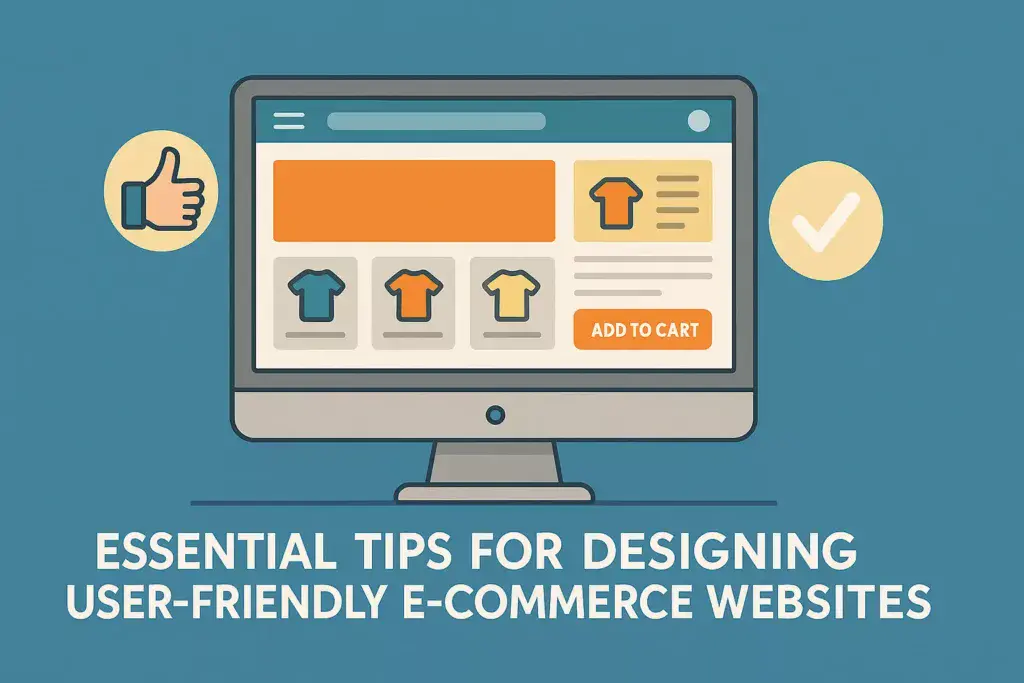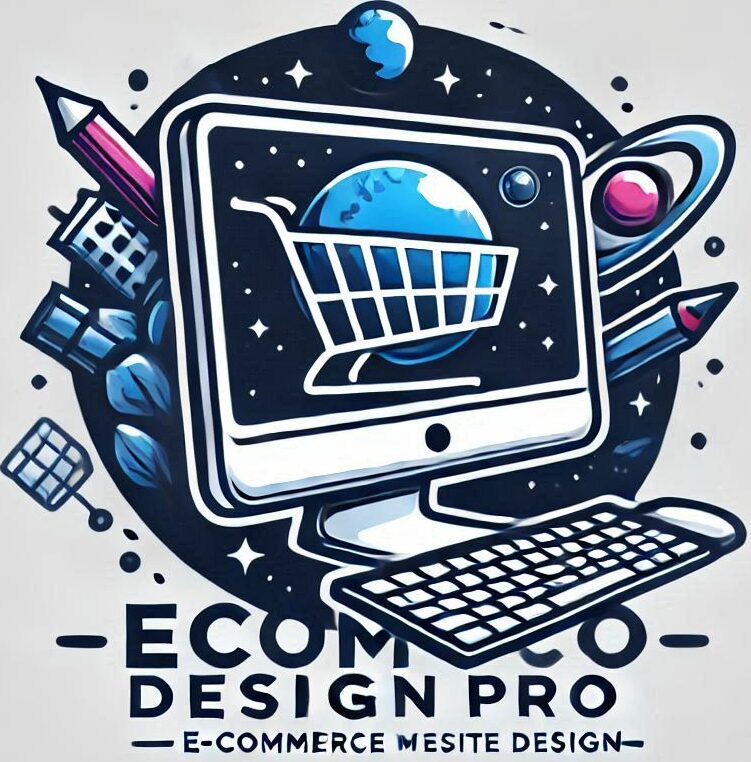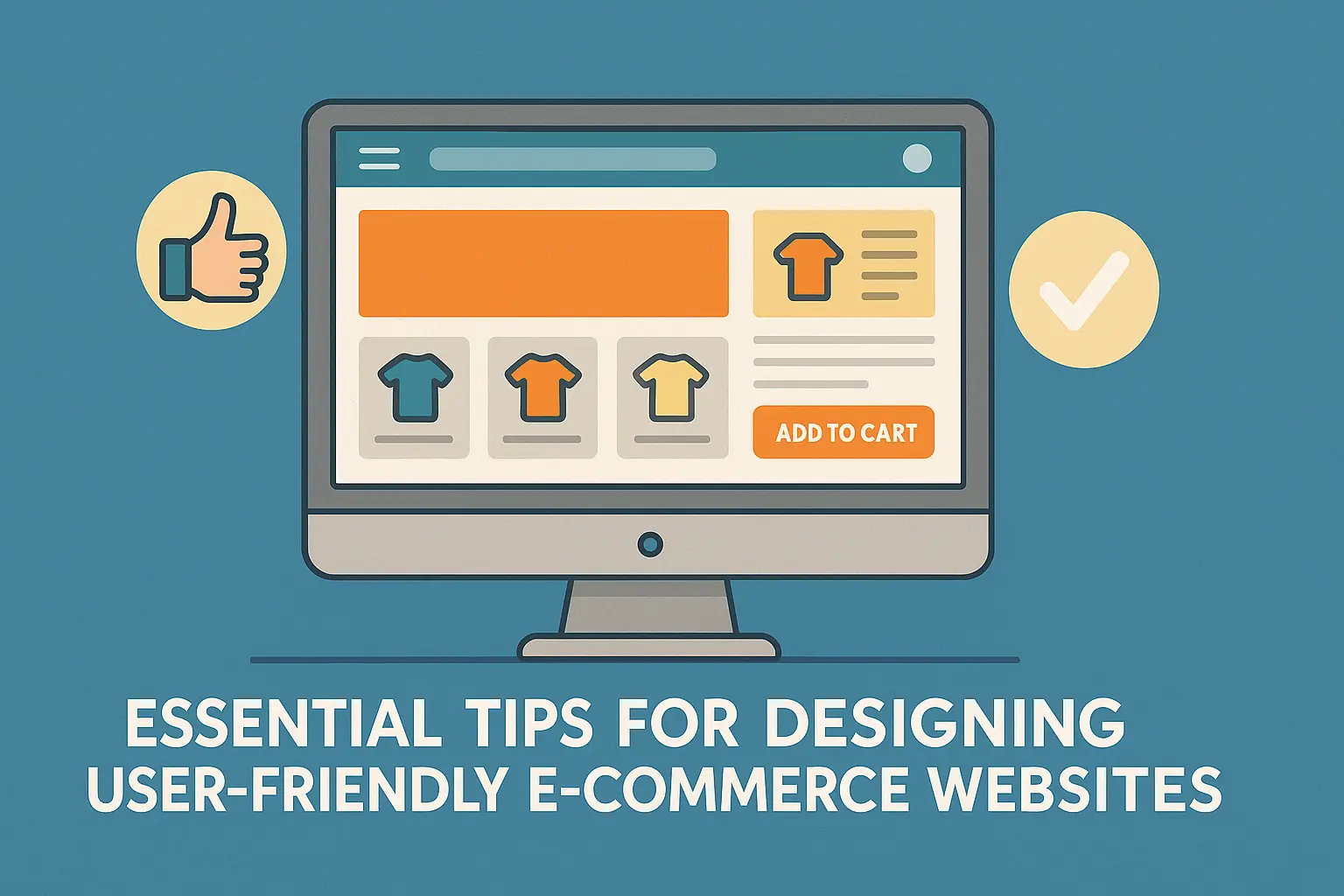
I. Introduction to User-Friendly E-Commerce Design
In today’s digital landscape, where competition is fierce and consumer expectations are higher than ever, the design of an e-commerce website plays a crucial role in determining its success. User-friendly design is not merely an aesthetic choice; it is a fundamental aspect of creating an engaging shopping experience that can significantly influence customer satisfaction, retention, and ultimately, sales.
A user-friendly e-commerce website seamlessly guides visitors through their shopping journey, making it easy for them to find products, access information, and complete purchases with minimal friction. As online shoppers become increasingly savvy, they gravitate towards websites that prioritize simplicity, efficiency, and clarity. This is where thoughtful design becomes essential.
In this article, we will explore the various elements that contribute to a user-friendly e-commerce website. From understanding the principles of user experience (UX) and visual design to optimizing website functionality, we will provide actionable tips and insights to help businesses create an online store that not only attracts visitors but also converts them into loyal customers. By prioritizing user-friendly design, e-commerce businesses can enhance their overall brand reputation and foster lasting relationships with their clientele.
II. Understanding User Experience (UX)
In the competitive landscape of e-commerce, the importance of a positive user experience cannot be overstated. A seamless and enjoyable shopping journey significantly boosts conversion rates and customer retention. To achieve this, businesses should align their site structure with proven e-commerce website design best practices that emphasize intuitive navigation, fast load times, and mobile responsiveness.
User Experience (UX) is a crucial element in the design of any e-commerce website, as it encompasses the overall experience a user has when interacting with the site. A well-designed UX not only enhances customer satisfaction but also drives sales and fosters brand loyalty. Understanding the nuances of UX in e-commerce is essential for creating a site that meets the needs and expectations of users.
A. Importance of UX in E-Commerce
In the competitive landscape of e-commerce, the importance of a positive user experience cannot be overstated. A seamless and enjoyable shopping journey can significantly impact conversion rates and customer retention. When users encounter frustrating navigation, slow load times, or complicated checkout processes, they are likely to abandon their shopping carts and turn to competitors. Research shows that a well-optimized UX can lead to higher sales and reduced bounce rates, making it a critical aspect of e-commerce strategy.
B. Key Elements of Effective UX Design
Effective UX design in e-commerce encompasses several key elements:
- User-Centered Design: Prioritizing the needs, preferences, and behaviors of users is paramount. Conducting user research, such as surveys and interviews, can provide valuable insights into what customers want from their shopping experience.
- Intuitive Navigation: A clear and logical navigation structure helps users find products easily. Categories should be well-defined, and a prominent search bar should be available for users who prefer to search for specific items.
- Fast Loading Times: Speed is a critical factor in user experience. Websites that load slowly can frustrate users and lead to high abandonment rates. Optimizing images and using efficient coding practices can help improve load times.
- Accessible Design: Ensuring that the website is accessible to all users, including those with disabilities, is essential. This can include using alt text for images, ensuring sufficient contrast between text and background, and following best practices for screen reader compatibility.
- Feedback Mechanisms: Providing users with feedback, such as confirmation messages after an action (like adding an item to a cart), enhances their confidence in the interaction and guides them through the purchasing process.
C. Tools for UX Testing and Feedback
To evaluate and improve UX, e-commerce businesses can utilize a variety of tools and methodologies:
- A/B Testing: This technique involves comparing two versions of a web page to determine which performs better in terms of user engagement and conversion rates. By testing different designs, layouts, and content, businesses can make data-driven decisions.
- Heatmaps: Tools like Hotjar and Crazy Egg provide heatmaps that visually represent where users click, scroll, and spend the most time on a webpage. This information helps identify areas that may require improvement or adjustment.
- User Testing: Involving real users in testing the website can yield invaluable feedback. Services like UserTesting.com allow businesses to observe how users interact with their site and gather insights on pain points and frustrations.
- Surveys and Feedback Forms: After a purchase or interaction, sending surveys can help gather direct feedback from customers about their experience. This feedback can inform future design iterations and enhancements.
In summary, understanding user experience is fundamental to creating a successful e-commerce website. By prioritizing the user’s needs and employing effective design strategies, e-commerce retailers can create an engaging and satisfying shopping experience that drives sales and builds customer loyalty.
III. Visual Design Principles
Visual design plays a crucial role in creating a user-friendly e-commerce website. It is not only about aesthetics; it’s about creating an engaging experience that communicates the brand’s values and facilitates a seamless shopping journey. Below are essential visual design principles that can enhance the effectiveness of your e-commerce platform.
A. Creating a Cohesive Brand Image
A cohesive brand image is vital for establishing trust and recognition among customers. Your website’s visual elements—such as logos, typography, color schemes, and imagery—should work together to reflect your brand identity. Consistency across these elements helps reinforce brand memory and offers a familiar experience for returning customers. This includes using the same fonts, color palettes, and logos throughout the website to create a unified look. Additionally, your brand’s personality should resonate through the design choices, whether it’s modern and sleek or playful and colorful.
B. Color Psychology in E-Commerce
Color plays a psychological role in user decision-making and can significantly impact purchasing behavior. Different colors evoke various emotions and associations, which can influence how customers perceive your brand. For instance, blue is often associated with trust and reliability, making it a popular choice for finance-related websites, while red can create a sense of urgency, ideal for clearance sales or limited-time offers. When selecting a color scheme for your e-commerce site, consider your target audience and the emotions you want to evoke. Moreover, ensure that your color contrasts are accessible, providing enough differentiation for users with visual impairments.
C. Importance of High-Quality Images
High-quality images are essential for showcasing products effectively. Unlike physical stores, online shoppers cannot touch or try products before purchasing, making images the primary means of conveying quality and detail. Utilize professional photography to capture your products from various angles, and consider incorporating lifestyle images that show the products in use, helping customers visualize how they fit into their lives. Additionally, ensure that images are optimized for fast loading times without sacrificing quality, as slow-loading images can lead to high bounce rates and lost sales. Implementing zoom functionality can also enhance the user experience, allowing customers to closely examine products before making a purchase.
By adhering to these visual design principles, you can create an e-commerce website that not only attracts users but also encourages them to explore further, ultimately leading to higher conversion rates and customer satisfaction.
IV. Optimizing Website Functionality
A well-designed e-commerce website not only captivates users visually but also ensures that they can navigate and interact with it effortlessly. Optimizing website functionality is essential for creating a seamless shopping experience that encourages conversions and fosters customer loyalty. In this section, we’ll explore three critical aspects of website functionality: streamlined navigation, effective search features, and mobile responsiveness.
A. Streamlined Navigation for Better Usability
Navigation serves as the backbone of an e-commerce website, guiding users through various product categories and pages. A streamlined navigation system is crucial for usability, as it allows customers to find what they are looking for quickly and efficiently. To achieve this, consider the following strategies:
- Simple Menu Structure: Utilize a straightforward menu that categorizes products logically. Avoid overwhelming users with too many options at once; instead, use subcategories to break down products into manageable sections.
- Consistent Layout: Maintain a consistent layout across all pages to help users know where to find essential elements like the shopping cart, account login, and product filters. Familiarity breeds comfort, which can reduce bounce rates.
- Breadcrumb Trails: Implement breadcrumb navigation to help users keep track of their location within the site. This not only enhances usability but also encourages exploration of related products without losing their way.
B. Implementing Effective Search Features
A robust search feature can significantly enhance user experience by allowing customers to quickly locate specific items. When optimizing search functionality, consider the following elements:
- Autocomplete Suggestions: Incorporate autocomplete suggestions in the search bar to guide users as they type. This feature can help users find products faster and reduce the likelihood of spelling errors.
- Advanced Filtering Options: Provide users with advanced filtering options that allow them to narrow down search results based on criteria such as price, size, color, and brand. This empowers users to find products that meet their specific needs and enhances overall satisfaction.
- Search Analytics: Utilize analytics tools to track search queries and user behavior. This data can provide insights into popular products and potential gaps in your inventory, enabling you to optimize your offerings based on customer demand.
C. Ensuring Mobile Responsiveness
With the rise of mobile shopping, ensuring that your e-commerce website is responsive to various devices is no longer optional; it is a necessity. A mobile-responsive design adapts seamlessly to different screen sizes, providing a consistent experience across devices. Here are key considerations for optimizing mobile responsiveness:
- Fluid Grids and Flexible Images: Implement fluid grid layouts that adjust content based on screen size. Additionally, use flexible images that resize automatically to fit different devices, preventing distortion and ensuring a polished appearance.
- Touch-Friendly Elements: Design buttons and interactive elements to be easily clickable on touch screens. Ensure that they are adequately spaced to prevent users from accidentally clicking the wrong item, which can lead to frustration.
- Fast Load Times: Mobile users often expect quick access to information. Optimize your website’s loading speed by compressing images, minimizing code, and leveraging browser caching. A faster site reduces bounce rates and keeps users engaged.
By focusing on these aspects of website functionality, e-commerce businesses can create a more user-friendly experience that not only meets customer expectations but also drives sales. A seamless, intuitive online shopping environment fosters customer trust and encourages return visits, ultimately leading to increased revenue and brand loyalty.
V. Conclusion and Key Takeaways
In the fast-paced world of e-commerce, a user-friendly website is not just an added bonus; it is a necessity for success. As consumers increasingly turn to online shopping, the importance of delivering an exceptional user experience cannot be overstated. This article explored various aspects of user-friendly e-commerce website design, highlighting the critical role of user experience (UX), visual design principles, and website functionality.
To summarize, the key takeaways for creating a user-friendly e-commerce website include:
- Prioritize User Experience: Understanding the needs and behaviors of your users is essential. A well-designed UX can significantly enhance customer satisfaction, leading to higher conversion rates and repeat business. Regularly testing and gathering feedback can help identify areas for improvement.
- Focus on Visual Design: A cohesive brand image, complemented by thoughtfully chosen colors and high-quality images, not only attracts visitors but also fosters trust and engagement. Visual elements should align with your brand’s identity while effectively guiding users through their shopping journey.
- Optimize Website Functionality: Streamlined navigation and effective search features are fundamental to usability. Ensuring that your website is mobile-responsive is also crucial, as more shoppers are using their smartphones and tablets for online purchases.
In conclusion, investing time and resources into creating a user-friendly e-commerce website pays off in the long run. By prioritizing UX, embracing strong visual design principles, and optimizing functionality, businesses can create an engaging shopping experience that converts visitors into loyal customers. As the e-commerce landscape continues to evolve, staying attuned to user needs and design best practices will be key to thriving in this competitive market.
? Pro Tip
If you’re looking to build a user-friendly e-commerce website from scratch, Shopify is one of the best platforms to start with. It offers intuitive drag-and-drop features, mobile-optimized themes, and built-in UX tools designed for seamless customer experiences. Whether you’re a beginner or scaling up, Shopify simplifies every step of your online store journey.
Sign up for a free trial here and see how easy it is to create a store your customers will love.



